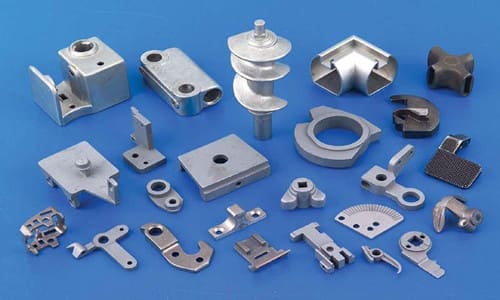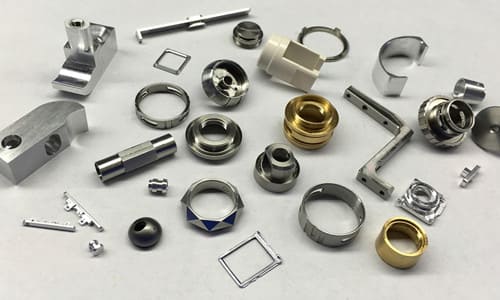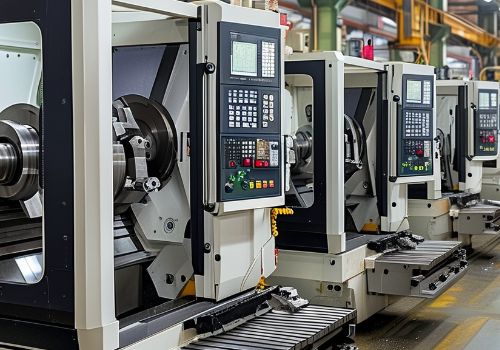There are many types of workpieces in processing, and there are also many processing methods. Different types of workpieces have different processing methods and technical requirements. Let’s have a look at the details.
1. Requirements for CNC machining process
A. The parts should be inspected and accepted according to the processing procedures, and can only be transferred to the next procedure after the previous procedure is qualified.
B. The processed parts are not allowed to have burrs.
C. The finished parts shall not be placed directly on the ground when placed, and necessary support and protection measures shall be taken. The machined surface is not allowed to have defects such as rust, bumps and scratches that affect performance, life or appearance.
D. The surface processed by rolling shall not peel off after rolling.
E. The parts after heat treatment in the final process should not have oxide scale on the surface. Finished mating surfaces and tooth surfaces should not be annealed
F. The surface of the processed thread is not allowed to have defects such as black skin, bumps, random buckles and burrs.
2. Requirements for forging process
A. The nozzle and riser of the forgings should have enough excise amount to ensure that the forgings have no shrinkage hole and serious deflection.
B. Forgings should be forged on a forging press with sufficient capacity to ensure full penetration of the forgings.
C. Forgings are not allowed to have visible cracks, folds and other appearance defects that affect use. Local defects can be removed, but the cleaning depth should not exceed 75% of the machining allowance. The defects on the non-machined surface of the forging should be cleaned and smoothly transitioned.
D. White spots, internal cracks and residual shrinkage holes are not allowed in forgings.
3. Requirements for welding parts processing
A. Defects must be thoroughly removed before welding, and the groovesurface should be repaired smoothly and without sharp corners.
B. The defect area of the welded parts can be removed by shoveling, grinding, carbon arc gouging, gas cutting or machining.
C. The dirt, sand, oil, water, rust and other dirt within 20mm around the welding area and the groove must be thoroughly cleaned up.
D. During the whole welding process, the temperature of the preheating zone shall not be lower than 350°C.
E. When conditions permit, weld as much as possible in a horizontal position.
F. When repairing welding, the welding rod should not make excessive lateral swing.
G. During surface surfacing welding, the overlap between the weld beads shall not be less than 1/3 of the weld bead width. The welding surface should be free of burns, cracks and obvious nodules.
H. The appearance of the welding seam is beautiful, and there is no defects such as biting meat, adding slag, pores, cracks, and splashing; the welding wave is uniform.
4. The requirements for casting process
A. No cold partition, cracks, shrinkage holes, penetrating defects and serious incomplete defects (such as under-casting, mechanical damage, etc.) are allowed on the surface of the casting.
B. The castings should be cleaned up without burrs and flashes. The pouring risers on the non-processed surface should be cleaned flush with the casting surface.
C. The casting characters and marks on the non-machined surface of the casting should be clear and identifiable, and the position and font should meet the drawing requirements.
D. The molding sand, core sand and core bone on the casting should be cleaned.
E. The castings have inclined plane, and the dimensional tolerance zone should be arranged symmetrically along the inclined plane.
F. The wrong shape and boss casting deviation should be corrected to achieve a smooth transition and ensure the appearance quality.
As a professional CNC machining manufacturer, DO Machining not only produce metal parts, but plastic and wood parts are also available.
Please visit our CAPABILITIES and what PRODUCTS we did.
CNC machining service is the core business of DO Machining, from protptyes to bulk production, our professional 3/4/5 aixs CNC machining centers, CNC turning equipments, CNC turning-milling equipments, CNC grinding machines etc., are operated by well trained manufacturing engineers to meet the demands from global 1000+ customers in 30+ industries.
CNC Machining can be done starting with blanks produced from standard bar stock or one of DO Machining other manufacturing processes.
Contact us to see how we can provide overall value to your CNC machining needs.











